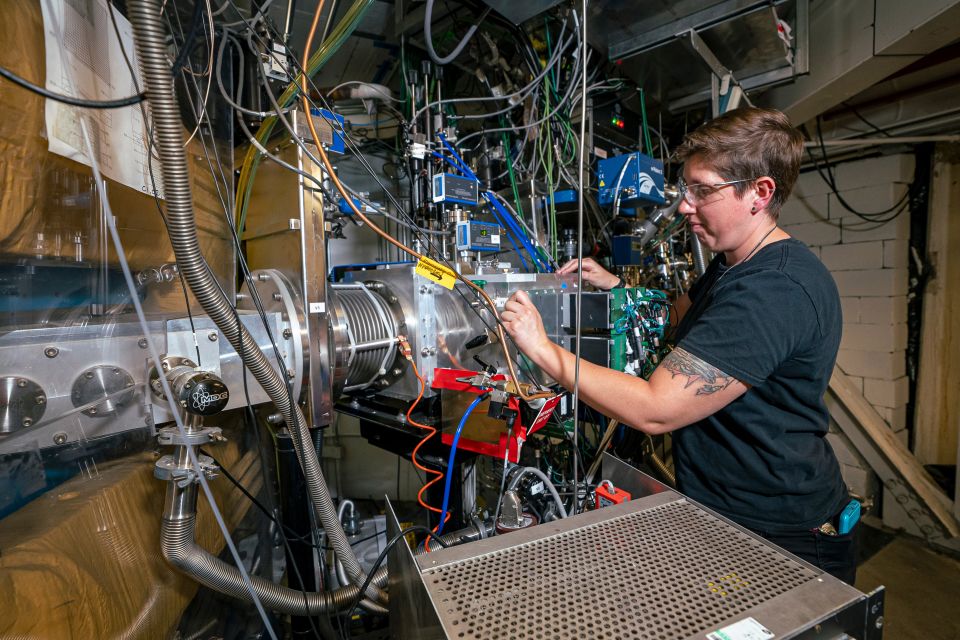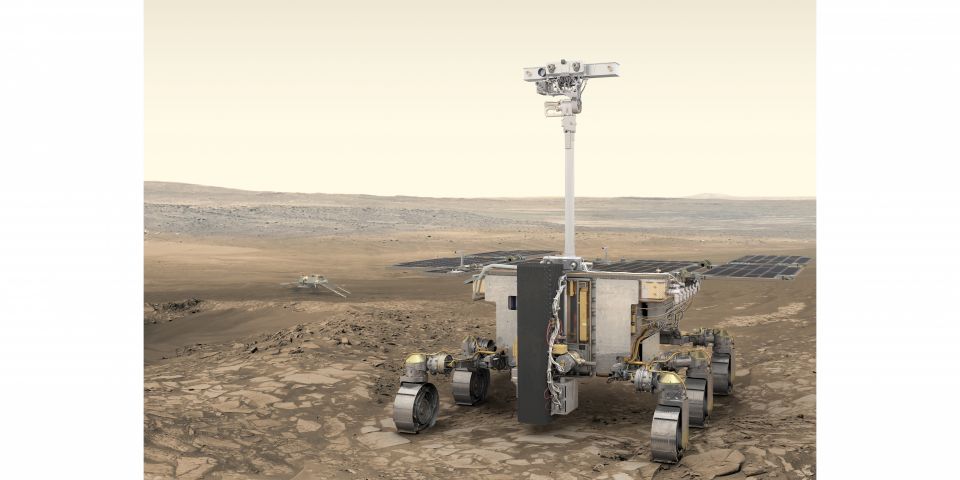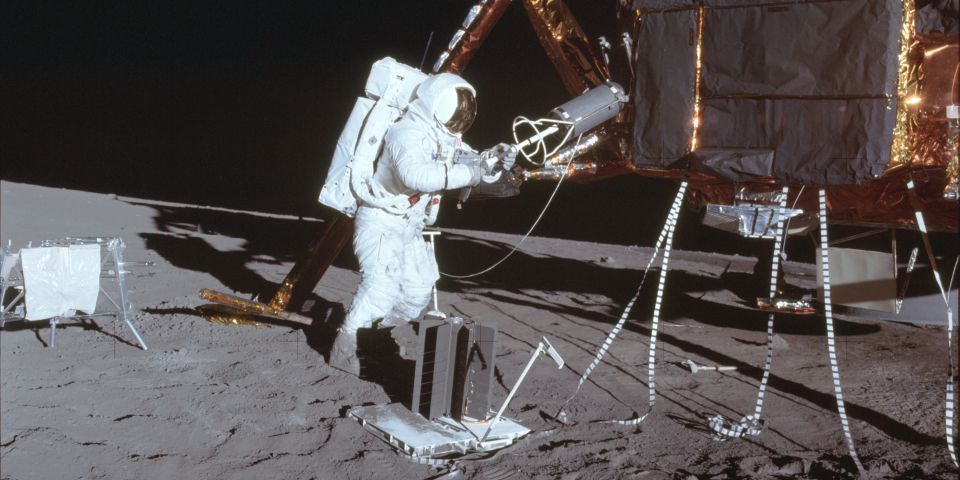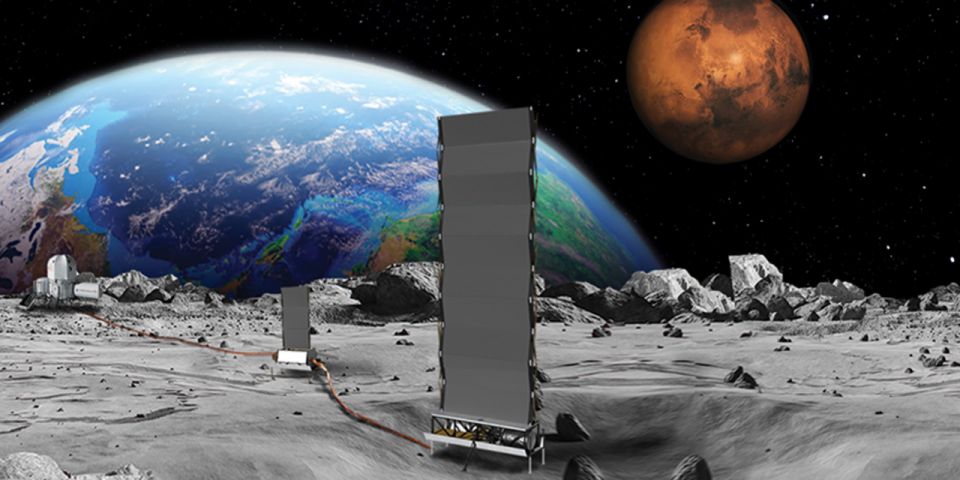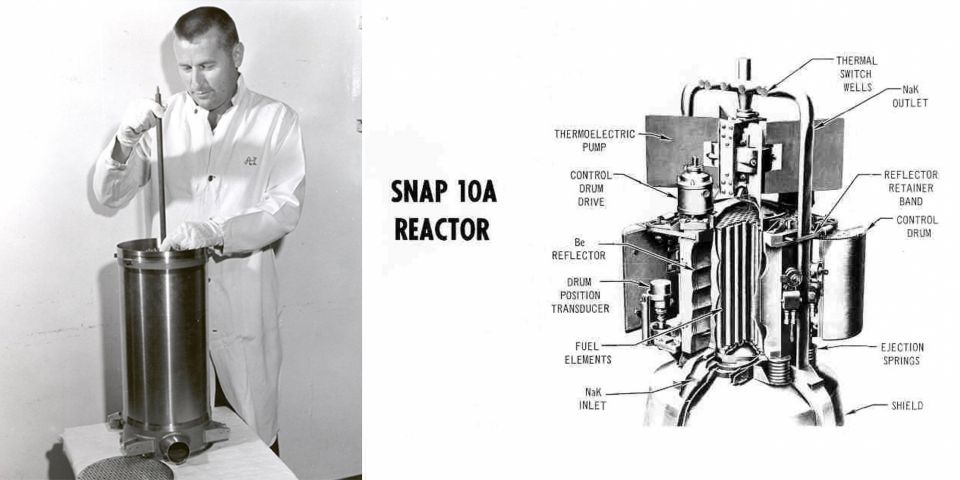The Cassini-Huygens Mission to Saturn
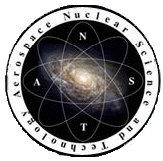 Cassini-Huygens is a Flagship-class NASA-ESA-ASI robotic spacecraft sent to the Saturn system. It has studied the planet and its many natural satellites since its arrival there in 2004, as well as observing Jupiter and the Heliosphere, and testing the theory of relativity. Launched in 1997 after nearly two decades of gestation, it includes a Saturn orbiter Cassini and an atmospheric probe/lander Huygens that landed in 2005 on the moon Titan. Cassini is the fourth space probe to visit Saturn and the first to enter orbit, and its mission is ongoing as of 2013. It is powered by a plutonium power source, and has facilitated many landmark scientific discoveries in its mission to the stars.
Cassini-Huygens is a Flagship-class NASA-ESA-ASI robotic spacecraft sent to the Saturn system. It has studied the planet and its many natural satellites since its arrival there in 2004, as well as observing Jupiter and the Heliosphere, and testing the theory of relativity. Launched in 1997 after nearly two decades of gestation, it includes a Saturn orbiter Cassini and an atmospheric probe/lander Huygens that landed in 2005 on the moon Titan. Cassini is the fourth space probe to visit Saturn and the first to enter orbit, and its mission is ongoing as of 2013. It is powered by a plutonium power source, and has facilitated many landmark scientific discoveries in its mission to the stars.
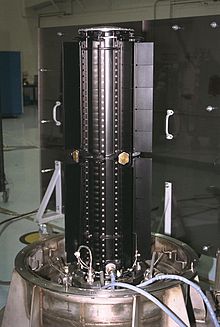
A Cassini RTG before installation
Because of Saturn's distance from the Sun, solar arrays were not feasible as power sources for this space probe. To generate enough power, such arrays would have been too large and too heavy. Instead, the Cassini orbiter is powered by three radioisotope thermoelectric generators (RTGs), which use heat from the natural decay of about 33 kg (73 lb) of plutonium-238 (in the form of plutonium dioxide) to generate direct current electricity via thermoelectrics. The RTGs on the Cassini mission have the same design as those used on the New Horizons, Galileo, and Ulysses space probes, and they were designed to have a very long operational lifetime. At the end of the nominal 11-year Cassini mission, they will still be able to produce 600 to 700 watts of electrical power. One of the spare RTGs for the Cassini mission was used to power the New Horizons mission to Pluto and the Kuiper belt.
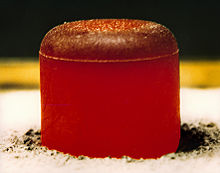
A glowing-hot plutonium pellet that will become the power source for the probe's RTG
To gain interplanetary momentum while in flight, the trajectory of the Cassini mission included several gravitational slingshot maneuvers: two fly-by passes of Venus, one more of the Earth, and then one of the planet Jupiter. The terrestrial fly-by maneuver was successful, with Cassini passing by 500 km (310 mi) above the Earth on August 18, 1999. Had there been a malfunction causing the Cassini space probe to collide with the Earth, NASA's complete environmental impact study estimated that, in the worst case (with an acute angle of entry in which Cassini would gradually burn up), a significant fraction of the 33 kg of plutonium-238 inside the RTGs could have been dispersed into the Earth's atmosphere. NASA estimated the odds against that happening at more than 1 million to one.
Selected events and discoveries for Cassini
 Cassini made its closest approach to Jupiter on December 30, 2000, and made many scientific measurements. About 26,000 images of Jupiter were taken during the months-long flyby. Cassini produced the most detailed global color portrait of Jupiter yet (see image at right), in which the smallest visible features are approximately 60 km (37 mi) across. The New Horizons mission to Pluto captured more recent images of Jupiter, with a closest approach on February 28, 2007.
Cassini made its closest approach to Jupiter on December 30, 2000, and made many scientific measurements. About 26,000 images of Jupiter were taken during the months-long flyby. Cassini produced the most detailed global color portrait of Jupiter yet (see image at right), in which the smallest visible features are approximately 60 km (37 mi) across. The New Horizons mission to Pluto captured more recent images of Jupiter, with a closest approach on February 28, 2007.
A major finding of the flyby, announced on March 6, 2003, was of Jupiter's atmospheric circulation. Dark "belts" alternate with light "zones" in the atmosphere, and scientists had long considered the zones, with their pale clouds, to be areas of upwelling air, partly because many clouds on Earth form where air is rising. But analysis of Cassini imagery showed that individual storm cells of upwelling bright-white clouds, too small to see from Earth, pop up almost without exception in the dark belts.
Other atmospheric observations included a swirling dark oval of high atmospheric-haze, about the size of the Great Red Spot, near Jupiter's north pole. Infrared imagery revealed aspects of circulation near the poles, with bands of globe-encircling winds, with adjacent bands moving in opposite directions. The same announcement also discussed the nature of Jupiter's rings. Light scattering by particles in the rings showed the particles were irregularly shaped (rather than spherical) and likely originate as ejecta from micrometeorite impacts on Jupiter's moons, probably Metis and Adrastea.
Tests of General Relativity
On October 10, 2003, the Cassini science team announced the results of tests of Einstein's Theory of General Relativity, which were done by using radio waves that were transmitted from the Cassini space probe. This remains the best measurement of post-Newtonian parameter γ; the result γ = 1 + (2.1 ± 2.3) �- 10-5 agrees with the predictions of standard General Relativity.
The radio scientists measured a frequency shift in the radio waves to and from the spacecraft, while those signals traveled close to the Sun. According to the Theory of General Relativity, a massive object like the Sun causes space-time to curve, and a beam of radio waves (or light, or any form of electromagnetic radiation) that passes by the Sun has to travel farther because of this curvature.
The extra distance that the radio waves traveled from the Cassini craft, past the Sun, to the Earth delayed their arrival. The amount of this time delay provided a sensitive test of the calculated predictions of Einstein's Relativity Theory.
Although some measurable deviations from the values that are calculated using the General Theory of Relativity are predicted by some unusual cosmological models, no deviations were found by this experiment. Previous tests using radio waves that were transmitted by the Viking and Voyager space probes were in agreement with the calculated values from General Relativity to within an accuracy of one part in one thousand. The more refined measurements from the Cassini space probe experiment improved this accuracy to about one part in 51,000, with the measured data firmly supporting Einstein's General Theory of Relativity.
New moons of Saturn
Using images taken by Cassini, three new moons of Saturn were discovered in 2004. They are very small and were given the provisional names S/2004 S 1, S/2004 S 2, and S/2004 S 5, before being named Methone, Pallene, and Polydeuces at the beginning of 2005.
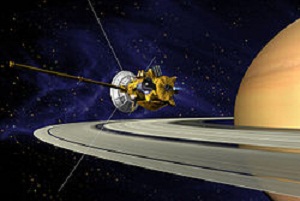 On May 1, 2005, a new moon was discovered by Cassini in the Keeler gap. It was given the designation S/2005 S 1, before being named Daphnis. The only other known moon inside Saturn's ring system is the moon Pan.
On May 1, 2005, a new moon was discovered by Cassini in the Keeler gap. It was given the designation S/2005 S 1, before being named Daphnis. The only other known moon inside Saturn's ring system is the moon Pan.
A fifth new moon was discovered by Cassini on May 30, 2007, now known as Anthe.
A press release on February 3, 2009, showed a sixth new moon found by Cassini. The moon is approximately 1/3 of a mile in diameter within the G-ring of the ring system of Saturn, and is now named Aegaeon.
A press release on November 2, 2009, mentions the seventh new moon found by Cassini on July 26, 2009. It is presently labeled S/2009 S 1, and is approximately 300 m (984 ft.) in diameter in the B-ring system.
Phoebe flyby
On June 11, 2004, Cassini flew by the moon Phoebe. This was the first opportunity for closeup studies of this moon since the Voyager 2 flyby. It also was Cassini's only possible flyby for Phoebe due to the mechanics of the available orbits around Saturn.
 The first closeup images were received on June 12, 2004, and mission scientists immediately realized that the surface of Phoebe looks different from asteroids visited by spacecraft. Parts of the heavily cratered surfaces look very bright in those pictures, and it is currently believed that a large amount of water ice exists under its immediate surface.
The first closeup images were received on June 12, 2004, and mission scientists immediately realized that the surface of Phoebe looks different from asteroids visited by spacecraft. Parts of the heavily cratered surfaces look very bright in those pictures, and it is currently believed that a large amount of water ice exists under its immediate surface.
Saturn rotation
In an announcement on June 28, 2004, Cassini program scientists described the measurement of the rotational period of Saturn. Since there are no fixed features on the surface that can be used to obtain this period, the repetition of radio emissions was used. These new data agree with the latest values measured from Earth, and constitute a puzzle to the scientists. It turns out that the radio rotational period has changed since it was first measured in 1980 by Voyager, and that it is now six minutes longer. This does not indicate a change in the overall spin of the planet, but is thought to be due to movement of the source of the radio emissions to a different latitude, at which the rotation rate is different.
Orbiting Saturn
On July 1, 2004, the Cassini spacecraft flew through the gap between Saturn's F and G rings and achieved orbit, after a seven-year voyage. Cassini is the first spacecraft to ever orbit Saturn.
The Saturn Orbital Insertion maneuver performed by Cassini was complex, requiring the craft to orient its high-gain antenna away from Earth and along its flight path, to shield its instruments from particles in Saturn's rings. Once the craft crossed the ring plane, it had to rotate again to point its engine along its flight path, and then the engine fired to decelerate the craft by 622 m/s (1391 mph) to allow Saturn to capture it. Cassini was captured by Saturn's gravity at around 8:54 p.m. Pacific Daylight Time on June 30, 2004. During the maneuver, Cassini passed within 20,000 km (12,000 mi) of Saturn's cloud tops.
Titan flybys
Cassini had its first distant flyby of Saturn's largest moon, Titan, on July 2, 2004, only a day after orbit insertion, when it approached to within 339,000 km (211,000 mi) of Titan and provided the best look at Titan's surface to date. Images taken through special filters (able to see through the moon's global haze) showed south polar clouds thought to be composed of methane, and surface features with widely differing brightness. On October 27, 2004, the spacecraft executed the first of 45 planned close flybys of Titan, when it flew a mere 1,200 kilometers above the moon. Almost four gigabits of data were collected and transmitted to Earth, including the first radar images of the moon's haze-enshrouded surface. It revealed the surface of Titan (at least the area covered by radar) to be relatively level, with topography reaching no more than about 50 meters in altitude. The flyby provided a remarkable increase in imaging resolution over previous coverage. Images with up to 100 times better resolution were taken and are typical of resolutions planned for future Titan flybys.
Huygens lands on Titan
Cassini released the Huygens probe on December 25, 2004, by means of a spring and spiral rails intended to rotate the probe for greater stability. Huygens entered the atmosphere of Titan on January 14, 2005, and after a two-and-a-half-hour descent landed on solid ground. Although Cassini successfully relayed 350 of the pictures that it received from Huygens of its descent and landing site, a software error failed to turn on one of the Cassini receivers and resulted in the loss of the other 350 pictures.
Enceladus flybys

Enceladus backdropped by Saturn's ring shadows in 2007
During the first two close flybys of the moon Enceladus in 2005, Cassini discovered a "deflection" in its local magnetic field that is characteristic for the existence of a thin but significant atmosphere. Other measurements obtained at that time point to ionized water vapor as being the atmosphere's main constituent. Cassini also observed water ice geysers erupting from the south pole of Enceladus, which gives more credibility to the idea that Enceladus is supplying the particles of Saturn's E ring. Mission scientists hypothesize that there may be pockets of liquid water near the surface of the moon that fuel the eruptions, making Enceladus one of the few bodies in the Solar System known to contain liquid water.
On March 12, 2008, Cassini made a close flyby of Enceladus, getting within 50 km of the moon's surface. The spacecraft passed through the plumes extending from its southern geysers, detecting water, carbon dioxide, and various hydrocarbons with its mass spectrometer, while also mapping surface features with its infrared spectrometer that were measured to be at much higher temperature than their surroundings. Cassini was unable to collect data with its cosmic dust analyzer due to an unknown software malfunction.
Radio occultations of Saturn's rings
In May 2005, Cassini began a series of occultation experiments to measure the size-distribution of particles in Saturn's rings, and measure the atmosphere of Saturn itself. For more than four months, Cassini completed orbits designed for this purpose. During these experiments, Cassini flew behind the ring plane of Saturn, as seen from Earth, and transmitted radio waves through the particles. The radio signals were received on Earth, where the frequency, phase, and power of the signal were analyzed to help determine the structure of the rings.
Spoke phenomenon verified
In images captured September 5, 2005, Cassini detected spokes in Saturn's rings, previously seen only by the visual observer Stephen James O'Meara in 1977 and then confirmed by the Voyager space probes in the early 1980s.
Lakes of Titan
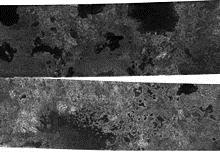 Radar images obtained on July 21, 2006, appear to show lakes of liquid hydrocarbon (such as methane and ethane) in Titan's northern latitudes. This is the first discovery of currently-existing lakes anywhere besides Earth. The lakes range in size from one to 100 kilometers across.
Radar images obtained on July 21, 2006, appear to show lakes of liquid hydrocarbon (such as methane and ethane) in Titan's northern latitudes. This is the first discovery of currently-existing lakes anywhere besides Earth. The lakes range in size from one to 100 kilometers across.

Titan "sea" (left) compared at scale to Lake Superior (right)
On March 13, 2007, the Jet Propulsion Laboratory announced that it had found strong evidence of seas of methane and ethane in the northern hemisphere of Titan. At least one of these is larger than any of the Great Lakes in North America.
A Saturnine hurricane
In November 2006, scientists discovered a storm at the south pole of Saturn with a distinct eyewall. This is characteristic of Earth's hurricanes and had never before been seen on another planet. Unlike a Terran hurricane, the storm appears to be stationary at the pole. The storm is 8,000 kilometers (5,000 mi) across, and 70 kilometres (43 mi) high, with winds blowing at 560 km/hr (350 mph).
Great Storm of 2010 and its aftermath
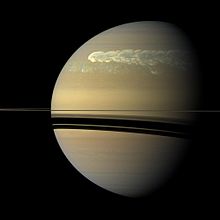
Storm in the North 2011
On October 25, 2012, Cassini witnessed the aftermath of the massive Great White Spot storm that recurs roughly every 30 years on Saturn. Data from Cassini's composite infrared spectrometer instrument indicated a powerful discharge from the storm that caused a temperature spike in the stratosphere of Saturn 150 °F (83 kelvins) above normal. Simultaneously, a huge increase in ethylene gas was detected by NASA researchers at Goddard Research Center in Greenbelt, Maryland. Ethylene is a colorless and odorless gas that is highly uncommon on Saturn and is produced both naturally and through man-made sources on Earth. The storm that produced this discharge was first observed by Cassini on December 5, 2010, in Saturn's northern hemisphere. The storm is the first of its kind to be observed by a spacecraft in orbit around Saturn as well as the first to be observed at thermal infrared wavelengths, allowing scientists to observe the temperature of Saturn's atmosphere and track phenomena that are invisible to the naked eye. The spike of ethylene gas that was produced by the storm reached levels that were 100 times more than those thought possible for Saturn. Scientists have also determined that the storm witnessed was the largest, hottest stratospheric vortex ever detected in our solar system, initially being larger than Jupiter's Great Red Spot.
Mission extension
On April 15, 2008, Cassini received funding for a two-year extended mission. This consisted of 60 more orbits of Saturn, with 21 more close Titan flybys, seven of Enceladus, six of Mimas, eight of Tethys, and one targeted flyby each of Dione, Rhea, and Helene. The extended mission began on July 1, 2008, and was renamed the Cassini Equinox Mission as it coincided with Saturn's equinox.
A proposal was submitted to NASA for a second mission extension, provisionally named the extended-extended mission or XXM. This was subsequently approved and renamed the Cassini Solstice Mission. It will see Cassini orbiting Saturn 155 more times, conducting 54 additional flybys of Titan, and 11 more of Enceladus. The chosen mission ending is a series of very close Saturn passes, passing inside the rings, then a plunge into the Saturn atmosphere around the 2017 northern summer solstice, to destroy the spacecraft.
_______________________

Tackett
Stan Tackett holds undergraduate degrees in mathematics and computer science, and is currently pursuing a Master's degree in computer science with specializations in uses of artificial intelligence in the nuclear industry. His interests in nuclear engineering include nuclear propulsion for space travel, fusion, computational fluid dynamics and reactor physics. In his spare time he reads Piers Anthony as much as possible, and enjoys writing and editing crossover science fiction stories.


